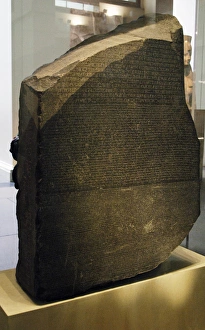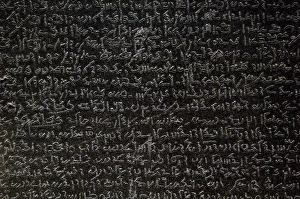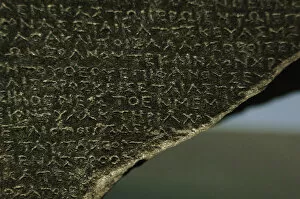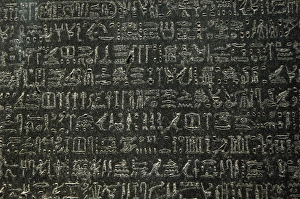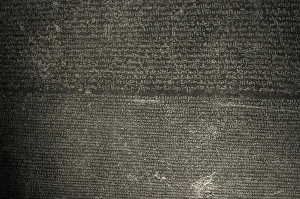Ptolemies Collection
The Ptolemies were a dynasty of Greek rulers who reigned over Egypt for nearly three centuries
All Professionally Made to Order for Quick Shipping
The Ptolemies were a dynasty of Greek rulers who reigned over Egypt for nearly three centuries. One of the most significant artifacts that shed light on their rule is the famous Rosetta Stone. This ancient slab, discovered in 1799, contains inscriptions in three different scripts: hieroglyphic, demotic, and Greek. The hieroglyphic scripture on the stone was particularly intriguing as it had long been considered a mysterious and indecipherable writing system. Scholars had struggled for centuries to unlock its secrets until the discovery of the Rosetta Stone provided them with a crucial key. Equally important was the demotic scripture found alongside the hieroglyphs. Demotic was a simplified form of Egyptian script used for everyday purposes during this period. The combination of these two scripts allowed linguists to decipher both systems more accurately. The Greek inscription on the stone proved invaluable in translating and understanding Egyptian history as it served as a bridge between ancient Egypt and classical Greece. It contained an official decree issued by King Ptolemy V, providing insights into his reign and policies. Different Ptolemies ruled throughout this era, each leaving their mark on Egypt's rich history. Engravings depicting various Ptolemies and their queens can be found alongside these scriptures on other historical artifacts. Thanks to its unique composition containing multiple languages, the Rosetta Stone became one of archaeology's greatest treasures. Its significance lies not only in unlocking ancient Egyptian texts but also in bridging cultural gaps between civilizations that existed thousands of years apart. Today, this iconic artifact stands as a symbol of human curiosity and determination to unravel mysteries from our past.


